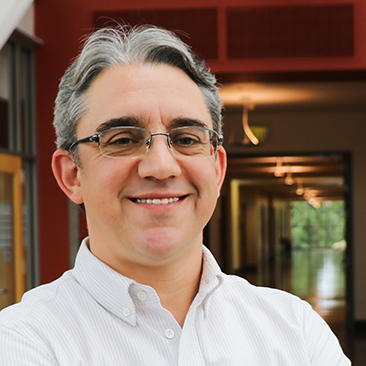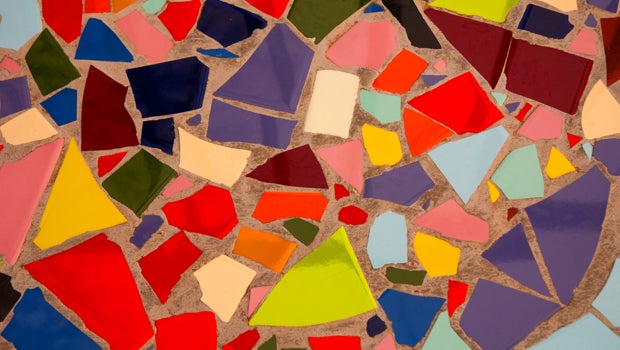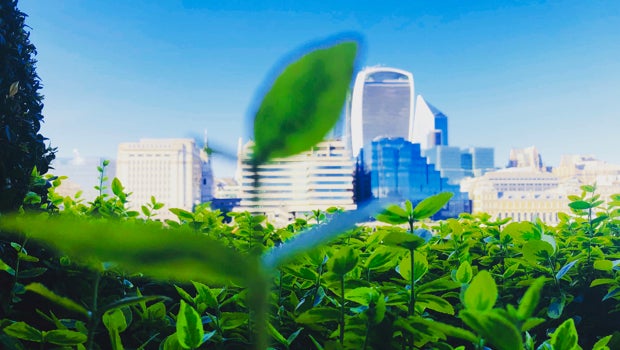In 2020, what was once unthinkable has often become headlines, for good and bad. In a year of so many crises, one bright spot has been business taking a bolder stance on climate policy—as Business Roundtable did with its endorsement of carbon taxes. Still, large questions loom not only about the implementation of such policies, but also on businesses’ focus on policy vs. changes at the level of the individual firm.
To explore these questions, we spoke with Joshua Skov, Instructor of Management at the Lundquist College of Business at the University of Oregon. In 2019, Skov was honored with an Aspen Institute Ideas Worth Teaching Award for his course, “Life-Cycle Assessment, Life Cycle Thinking, and Business Strategy.” Here’s what he had to say about how students solve complex problems by learning to balance narrow analyses with the bigger strategic picture.

Your course centers around something called a Life-Cycle Assessment (LCA) for products and services, why is this framework/tool so central to your business school course? What is the potential impact of the LCA, especially in light of the headlines of 2020?
Both LCA and its close cousin carbon accounting have emerged as analytical touchstones as companies attempt to understand what “impact” means to businesses, consumers, and society. But like so much in life, it’s as much about the journey as the destination, and I really emphasize to students the importance of setting up any close examination of a life cycle for a product, service, fuel, infrastructure element, or anything else around which a business model may be built.
If you quiz a person on the street about 2020, the pandemic and the election typically loom large. Yet this year has also brought a deluge of climate extremes and examples of faltering ecosystems, so the core motivation for the course – understanding how our economic systems are compromising the natural and human systems upon which we rely – remains intact.
In one of the final readings for the course, you warn readers against “fail[ing] to look up from our good and earnest work to ensure that it is, in a word, enough.” How should we balance in-depth investigation of a product’s social and environmental impact with a larger view of change that also considers government, NGOs, and markets?
That warning came to me first in the form of climate activist Bill McKibben’s 2017 Rolling Stone piece titled “Winning Slowly Is the Same as Losing” – a stern rebuke of climate policy efforts that embody so much “measured” compromise and “balance” that they lose track of the goal of addressing the climate crisis. In the business world, I see two flavors of that danger that inform my teaching.
First, using product and service life cycles as the medium, I take on exactly the challenge you suggest. I dance back and forth between two intellectual ventures: close examination of precise but ultimately narrow analyses of discrete things (a car, a house, a serving of protein) and the bigger strategic picture, which necessarily involves policy, culture, equity, and the broader economic system. This challenge is the same one we face inside the firm or the household: we have a job to do with a mountain of detail, but then we need to look up from the spreadsheet periodically, read our compass, and set a deliberate direction.
The danger: overly focusing on the details, and either forgetting about the big picture or letting incremental change provide a false sense of security, or both. The only way around that is to keep figuring out which part of the big picture relates to you and your business.
Second, many firms are now seeking “North Star” frameworks that demand better consideration of the big picture. It’s early days, but I’m encouraged by discussions of circularity. Similarly, science-based targets are clearly a step in the right direction.
Nonetheless, these frameworks can be dangerous, too: If they sound compelling and yet aren’t sufficiently ambitious in the scope and pace of change they offer, we run the risk of thinking we’re winning, when in fact we’re moving too slowly and… well, losing. Participating in a giant corporate voluntary effort with compelling qualitative goals is seductive and even soothing to its participants; that doesn’t mean there’s real change happening. I see this danger in many climate goals out there, and I’ve written about similar challenges with big firms’ supply chain goals for cotton.
How has COVID-19, and the attempts to stop its spread, reshaped consumer product life-cycles?
It is surely too soon to tell, and I believe we’re still kicking up dust rather than waiting for it to settle, but I have my eye on two particular trends.
First, the explosion in home delivery might end up mattering a lot. Along with Amazon’s revenues, we’re logging a lot more last-mile freight activity. And if my home is any guide, it brings a wave of packaging, too.
Second, the shift in where people work is a big deal. The vacancy rates in commercial real estate have skyrocketed, potentially altering medium-run development plans in cities. More important, many firms have no plans to go back in the next six months, and many have only pledged to reassess a little farther down the road. At a minimum, this changes patterns of home energy use, transportation, and consumption at the household scale as people turn homes into offices.
As alumni from your course go into leadership positions across industries and sectors, what is the one lesson that you hope will stick with them throughout their careers?
That’s easy to answer, though it’s a hard lesson to teach: Critical thinking does not have to be oversimplified or reductionist thinking. Instead, it can wallow productively in areas of uncertainty. This has two implications.
First, it means that some problems – once you define them carefully, with the proper boundaries – just don’t have simple answers. This insight is sort of obvious if you’re in a business defined by nuance and gray area, such as risk management or climate science or epidemiology or most of academia. But the business world often over-values “bold” decision-making that treats decisions as open-and-shut conclusions. I’m not telling leaders to waffle gratuitously, but neither should we pretend there’s an answer when there isn’t.
Second, it means that we need decision frameworks that evolve, and that deliver contingent rather than conclusive guidance. Consider a few of the areas where I’ve been most active as a teacher and a consultant in recent years: renewable energy, climate risk, resource scarcity. Each of these areas of knowledge has been characterized by extreme change and volatility, and the only way to think about them sanely is to revisit one’s position at regular (and short!) intervals. I occasionally meet people whose assessment of solar energy’s feasibility dates from 2015 – so they are missing out on a boom!
I hope my students come to understand this tricky lesson. The solution to complexity is not impulsive decision making that leads to brittle outcomes, even if it feels better in the moment to just decide and move on.
![]()
Interested in more innovative insights for business education? Browse our complete collection of interviews with outstanding educators, and subscribe to our weekly Ideas Worth Teaching digest!

